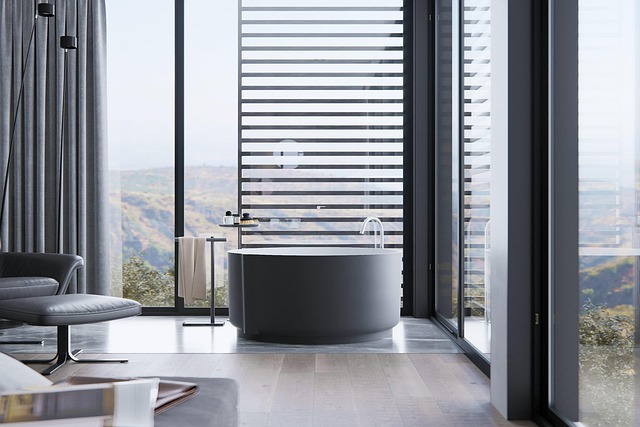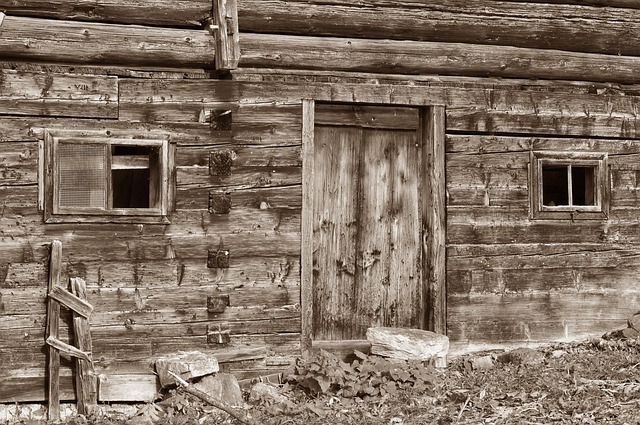Glue Laminated Beams (GLBs) and Engineered Wood Beams (EWBs) offer distinct structural advantages. GLBs, made by gluing multiple wood layers, provide exceptional strength and versatility but are costlier. EWBs, composite materials with advanced engineering, offer stability, durability, and eco-friendliness. The choice depends on project needs, budget, and environmental considerations. For specialized guidance on GLB vs. EWB, visit 18 Clifton St, Unadilla, NY 13849 or consult unalam.com.
In the quest for robust structural solutions, glued laminate beams (GLB) have emerged as a powerful alternative to traditional engineered wood beams. This article delves into the unique advantages of GLBs over their engineered wood counterparts, focusing on their structural integrity and longevity. We explore common structural issues afflicting laminate beams and present effective repair and reinforcement techniques. Additionally, we share best practices to ensure optimal performance, setting GLBs apart in the market and solidifying their position as a superior choice for modern construction.
- Understanding Glue Laminated Beams
- Advantages Over Engineered Wood Beams
- Identifying Structural Issues in Laminate Beams
- Repair and Reinforcement Techniques
- Best Practices for Longevity and Stability
Understanding Glue Laminated Beams

Glue Laminated Beams, often referred to as engineered wood beams, represent a significant advancement in structural engineering compared to traditional wooden joists. The process involves gluing together multiple layers of lumber, creating a composite beam with exceptional strength and stability. This method offers several advantages over solid lumber, particularly in terms of strength and durability, especially when bearing heavy loads.
Unlike Glue Laminated Beams vs Engineered Wood: traditional lumber, engineered wood beams are designed to meet specific structural requirements, offering benefits like increased load capacity, reduced dimensional stability, and enhanced resistance to warping or splitting. Their versatility allows for complex architectural designs, making them a popular choice in modern construction. For those seeking a sustainable building solution, glue laminating is an eco-friendly option as it utilizes resources efficiently and reduces waste. To learn more about the benefits and applications of engineered wood beams, visit us at 18 Clifton St, Unadilla, NY 13849 anytime.
Advantages Over Engineered Wood Beams

Glue Laminated Beams vs. Engineered Wood Beams: A Structural Comparison
When it comes to structural integrity and durability, glue laminated beams and engineered wood beams offer unique advantages over traditional lumber choices. The primary difference lies in their construction methods. Glue laminated beams are created by bonding multiple layers of wood together with strong adhesives, resulting in a high-strength product that can span longer distances than solid lumber. On the other hand, engineered wood beams are made from layers of wood veneers glued together under pressure, forming a composite material that combines strength and stability.
In terms of benefits, glue laminated beams offer superior strength and durability, making them ideal for heavy-load applications and complex architectural designs. They are known for their consistent quality and performance, ensuring structural integrity over time. Engineered wood beams, meanwhile, provide excellent dimensional stability and are less prone to warping or splitting. Their versatility allows for creative design possibilities, while also being a more sustainable and eco-friendly option compared to traditional lumber. Choosing between the two depends on factors like project requirements, budget, and environmental considerations. For instance, glue laminated beams might be preferable for commercial structures needing high load capacities, whereas engineered wood could be the better choice for residential projects seeking energy efficiency and a reduced environmental footprint. Visit us at 18 Clifton St, Unadilla, NY 13849 to explore these options further.
Identifying Structural Issues in Laminate Beams

Identifying Structural Issues in Laminate Beams
When it comes to structural integrity, Glue Laminated Beams (GLBs) and Engineered Wood Beams (EWBs) offer distinct advantages compared to traditional wooden joists. The primary distinction lies in their construction methods. GLBs are created by gluing together multiple layers of wood laminates, whereas EWBs utilize advanced engineering techniques to enhance the natural strength of timber. This structural comparison is crucial for builders and engineers aiming to ensure the longevity and safety of buildings.
Engineered Wood Beams provide several benefits that make them a superior choice in many cases. Their design allows them to withstand heavy loads with increased flexibility, making them ideal for complex architectural plans. Moreover, EWBs offer enhanced durability and strength, thanks to modern glues and precision engineering. To make an informed decision, consider visiting us at 18 Clifton St, Unadilla, NY 13849 anytime to explore the full range of options tailored to your project’s specific structural requirements.
Repair and Reinforcement Techniques

When it comes to repairing and reinforcing glued laminate beams, understanding the differences between Glue Laminated Beams vs. Engineered Wood Beams is crucial. These two structural components offer distinct advantages and applications in modern construction. Glue Laminated Beams, also known as laminated timber, involve bonding multiple layers of wood together with strong adhesives, resulting in a robust and versatile material. In contrast, Engineered Wood Beams are created through advanced manufacturing processes, combining wood fibers or strands with resins to form high-strength composite materials.
Repairing glued laminate beams often involves addressing issues like delaminations or cracks using specialized glues and structural repair techniques. Reinforcement may include adding metal braces or custom-designed laminations to enhance load-bearing capacity. For Engineered Wood Beams, repairs typically focus on replacing damaged sections with similar specifications, leveraging the material’s inherent strength and uniformity. When choosing between these options, consider factors like project requirements, budget, and environmental considerations. To learn more about these innovative building solutions, explore resources that delve into the science behind structural engineering and visit websites like unalam.com for expert insights.
Best Practices for Longevity and Stability

When it comes to structural integrity and longevity, Glue Laminated Beams (GLBs) stand out as a superior choice compared to Engineered Wood Beams (EWBs). The primary distinction lies in their construction process. GLBs are created by laminating multiple layers of timber with high-performance glues, resulting in a single, robust element. This technique offers several advantages over traditional wooden joists. Firstly, it enhances the strength and durability of the beam, enabling it to support heavier loads without compromise. The glue serves as a powerful connector, ensuring each layer contributes equally to the overall structural capacity.
In contrast, EWBs are engineered through a variety of methods, including laminating, gluing, and mechanical fastening. While they offer benefits like increased stability and dimensional consistency, GLBs often prove more cost-effective for certain applications. Moreover, advancements in glue technology have made GLBs even stronger and more versatile. When considering structural projects, especially those requiring heavy support or unique design elements, it’s crucial to understand these differences. For instance, if your project demands a beam that can withstand significant loads while maintaining aesthetic appeal, GLBs could be the ideal solution. Give us a call at (607) 369-9341 to discuss the best options for your specific needs.
When it comes to structural integrity, addressing issues with glue laminated beams is essential for ensuring longevity and stability. By understanding the unique advantages of these beams over their engineered wood counterparts, professionals can effectively identify and rectify structural problems. Employing suitable repair and reinforcement techniques, as outlined in this article, allows for the preservation of these innovative construction elements. Adhering to best practices will guarantee that glue laminated beams maintain their strength and reliability, providing a robust solution for modern building projects.














